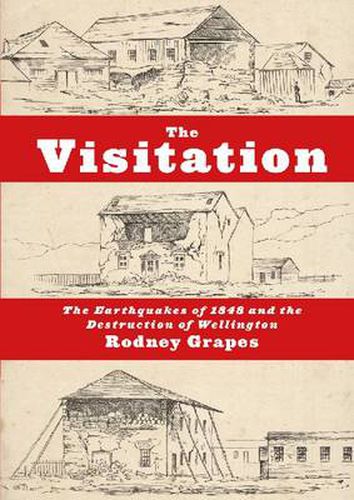Readings Newsletter
Become a Readings Member to make your shopping experience even easier.
Sign in or sign up for free!
You’re not far away from qualifying for FREE standard shipping within Australia
You’ve qualified for FREE standard shipping within Australia
The cart is loading…






Wellington was only a fledgling settlement of some 3000 people when it was struck by a cluster of devastating earthquakes in 1848. The fearful violence of the shocks, the destruction of property, and the frequency and continuance of the danger caused universal alarm, and it was feared the settlement and its future was ruined. But Wellington did recover, quite quickly. The British immigrants were not going to be deterred after coming halfway around the world, and in any case, most had nothing to go home to. Their direct accounts of the earthquake and its aftermath make compelling reading. Along with describing the effects of the 1848 earthquakes and the social response to them, The Visitation also explains their cause - the relationship between earthquakes and movement on fault lines, first discovered in the late 1880’s by the celebrated New Zealand geologist, Alexander McKay, following a large earthquake in North Canterbury on 1 September 1888. It also discusses the fault that ruptured during the first great shock of the 1848 earthquakes; what remains of the 1848 rupture today and its relation to large earthquakes in the past; and the geological context of the 1848 earthquakes as products of the convergence of two great tectonic plates through the Marlborough-North Canterbury area of the South Island of New Zealand; and ends with a possible scenario of a future large earthquake in Wellington generated by movement of the Wellington Fault.
$9.00 standard shipping within Australia
FREE standard shipping within Australia for orders over $100.00
Express & International shipping calculated at checkout
Wellington was only a fledgling settlement of some 3000 people when it was struck by a cluster of devastating earthquakes in 1848. The fearful violence of the shocks, the destruction of property, and the frequency and continuance of the danger caused universal alarm, and it was feared the settlement and its future was ruined. But Wellington did recover, quite quickly. The British immigrants were not going to be deterred after coming halfway around the world, and in any case, most had nothing to go home to. Their direct accounts of the earthquake and its aftermath make compelling reading. Along with describing the effects of the 1848 earthquakes and the social response to them, The Visitation also explains their cause - the relationship between earthquakes and movement on fault lines, first discovered in the late 1880’s by the celebrated New Zealand geologist, Alexander McKay, following a large earthquake in North Canterbury on 1 September 1888. It also discusses the fault that ruptured during the first great shock of the 1848 earthquakes; what remains of the 1848 rupture today and its relation to large earthquakes in the past; and the geological context of the 1848 earthquakes as products of the convergence of two great tectonic plates through the Marlborough-North Canterbury area of the South Island of New Zealand; and ends with a possible scenario of a future large earthquake in Wellington generated by movement of the Wellington Fault.